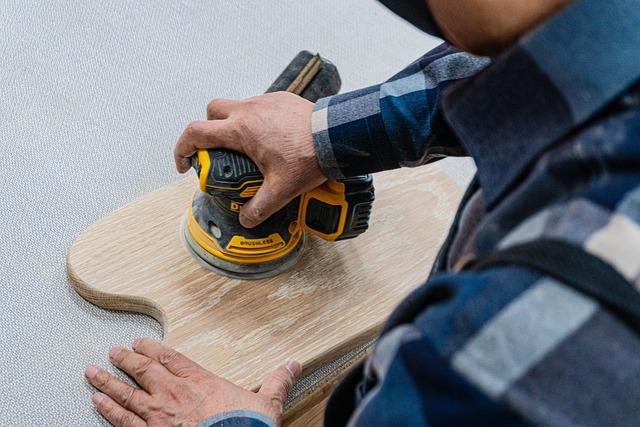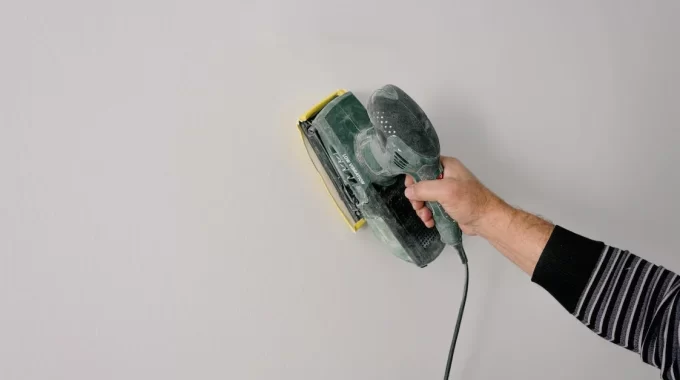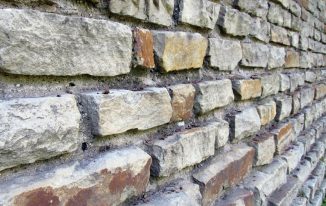5 Best Vibrating Sander on the Market
The vibrating sander is a handy device to renovate a house and give a welcome boost to damaged floors or doors that have withstood the weight of years. To help you choose the right equipment for your needs and budget, we have selected and compared 5 models. A comparison is made according to many criteria, such as the technical specifications of the devices.
Best vibrating sander
Best vibrating sander |
TECCPO 14500 OPM |
Skil 7361AA |
Bosch Multi PSM 160A |
Makita BO3711 |
Bosch Expert PEX 400 AE |
|
POWER |
210 W |
240 W |
200 W |
190 W |
350 W |
|---|---|---|---|---|---|
|
VARIABLE POWER |
No |
Yes |
Yes |
Yes |
Yes |
|
WEIGHT |
1,3 kg |
1,7 kg |
1,4 kg |
1,6 kg |
1,9 kg |
|
EMPTY SPEED |
14 000 tr/min |
12 000 – 26 000 tr/min |
6 000 – 26 000 tr/min |
4 000 – 11 000 tr/min |
4 000 – 21 200 tr/min |
|
ANTI-VIBRATION SYSTEM |
No |
No |
No |
Yes |
Yes |
The low-cost model: TECCPO 14500 OPM vibrating sander
The TECCPRO vibrating sander is an ideal model for beginners. It offers a power of 210 W for a speed of rotation of 14 000 cycles per minute. Its dimensions are compact, and its weight is measured (at 1,3 kg). It has a clamping system, allowing you to change the abrasive paper during the work without risking an accident. It has a dust extraction system in a cloth bag at the back of the device. However, a slight drawback: users regret the limited efficiency of this famous dust bag.
The +
– Ideal device for small jobs
– Compact size
– Lightweight model (1.3 kg)
– Low price
The –
– Inefficient dust bag
– Light power, not suitable for more intensive work
The vibrating sander for small jobs: Skil 7361AA
This Skil brand sander offers 240W power and a speed range of 12,000 to 26,000 rpm. It can be set to several speeds, depending on the nature of your work and the materials to be sanded. Its weight remains correct (1.7 kg). It is supplied with 3 sanding sheets, 2 normal, and one Velcro. Its compact design includes an ergonomic handle for an excellent grip. It includes a dust collector but many owners of this model note that it is not entirely waterproof and lets a lot of dust through during use.
The +
– Powerful for everyday work
– Ergonomic and non-slip handle
– Several rotation speeds
– Sold with 3 sanding sheets
The –
– Inefficient dust bag
The practical sander, even in the corners: Bosch Multi PSM 160A vibrating sander
The Bosch sander is a universal model thanks to its triangular swivel sanding plate, which makes it possible to reach even the tightest spots without effort. It compensates for its power with a light weight of 1.4 kg, as well as its compact dimensions and low noise level. It has a 160 W motor, a relatively low power which, if it is suitable for work at home, will hardly be useful for more professional operations. It is therefore reserved for domestic use.
The +
– Triangular platform, ideal for working even in corners
– Compact dimensions
– Very light (1,4 kg)
– Low noise level
The –
– Power is only sufficient for sanding jobs at home
The professional sander: Makita BO3711 vibrating sander
With the BO3711, Makita offers high-quality equipment. Its power is 190 W, a low value despite a correct rotation speed of 4 000 and 11 000 rpm. It benefits from a velcro base, allowing a solid grip on your sanding papers. The unit’s speed is variable, depending on the hardness of the materials you want to sand. The clamps make it easy and safe to change the sanding papers. The dust extraction system is still a drawback, as customers complain about the tank’s lack of power and water-tightness.
The +
– Non-slip handle offering a good grip
– Allows work on many surfaces (wood, plastic, metal, putty, varnish)
– Adjustable speed
– Lightweight (1.6 kg)
The –
– Light power may be limited for professional use
– Recovery box lacks water-tightness
– Lack of suction power
The expert sander: Bosch Expert PEX 400 AE vibrating sander
The sander proposed by Bosch is halfway between the needs of professionals and occasional DIYers. It perfectly compromises its 350 W power and ease of use. The Bosch Paper Assistant feature allows for a simple and safe change of the sanding disc, and the drill generates slight vibration during its use. The 2 handles are ergonomic and non-slip. Its weight of only 1.9 kg combined with its compact dimensions makes it the perfect companion for all your work.
The +
– Power of 350 W
– Allows working on many surfaces
– Adjustable power
– Two handles for an excellent grip while working
– Dust box at the back of the unit indicating the level of filling during use
The –
– Dust collection box is inconvenient to open
– No sanding discs included
Comparison: what are the criteria for choosing the best vibrating sander?
To buy a vibratory sander, you should consider a few things before making your choice.
– Power
The motor’s power is the main point in your selection of equipment. It is expressed in Watts (W). In general, the power and speed of the device are adjustable for more precise work according to the needs. A power up to 500 W will be amply necessary for work at home.
– Weight
Sanding machines are portable devices that, if heavy, can quickly tire the arms after several tens of minutes. A sander weighing less than 2 kg will be more suitable for long-term work.
– No-load speed
Associated with the power, this is the other value that determines the efficiency of your vibrating sander. It is expressed in revolutions per minute. The higher the average value, the more your sander can be used on hard surfaces where paint is difficult to remove.
– Vacuum system
Some drills have a dust collection block located at the back of the machine to collect the dust produced by sanding your surfaces. Be careful, however, as the dust collection boxes are more or less watertight depending on the model and can be ineffective.
Vibrating sander: advantages and disadvantages

The vibrating sander is a handy device for working on houses under renovation. It has many advantages:
– It allows sand without any effort or difficulty compared to a manual rubbing of the wood
– The devices are compact and light (less than 2 kg). All DIYers can use them.
– The power of the different products is sufficient for domestic use.
– The vibrating sanders are affordable models. A budget of up to $100 is sufficient for a model suitable for light work around the house.
On the other hand, a sander can have a few drawbacks:
– Vibratory sanders often come with minimal accessories, mainly sanding sheets. You’ll need to get additional sheets quickly after you buy the sander.
– They emit strong vibrations, more or less attenuated depending on the machine. This can make the work more tiring.
Read more:
– 4 Steps to Sanding a Wall With an Electric Sander;




